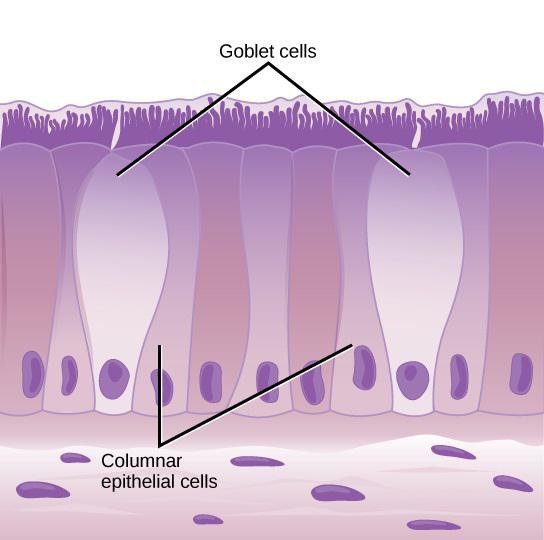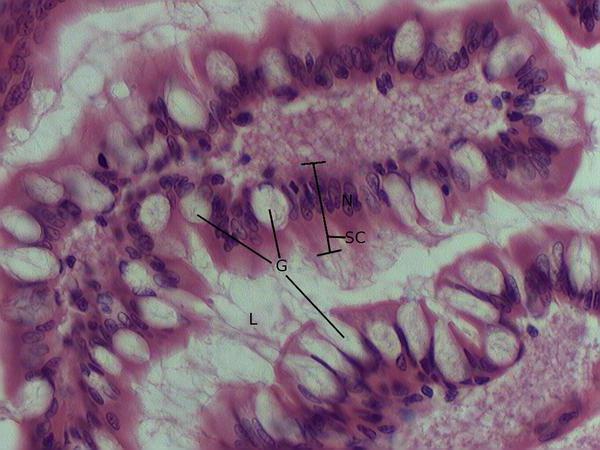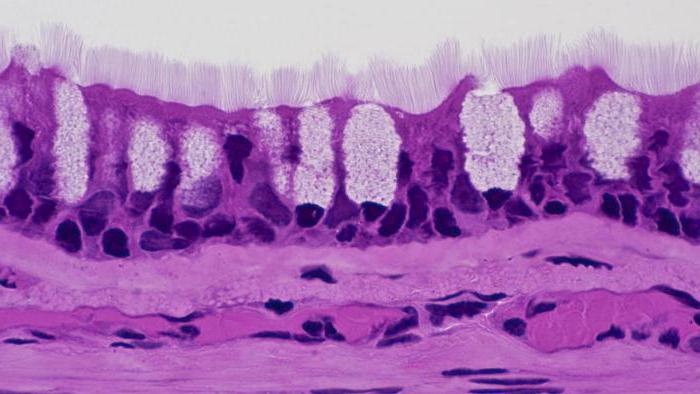Goblet cell: features of the structure, variants of names and location of localization
The human body is millions of cells of different shapes,type and size. They are so small that they can be examined and studied only under a microscope. In fact, the cells are microscopic bricks, from which the tissues, organ systems and the whole organism are built. Despite the difference in shape, all cells are characterized by a general outline of the structure. They consist of an outer membrane, a central core and a semi-fluid cytoplasm. We can talk about cells of different species for a long time, but in this article only one species, called goblet cells, will be considered. We will try to understand what they are, where they are localized and how they function.

Variants of names
Such cells are known by several names. The phrase "enterocyte goblet", "goblet exocrinocide" and "goblet granulocyte" is often used. In Latin, the goblet cell is called enterocytus caliciformis. Sometimes the term "goblet cell" is used, which also means a goblet cell. All these terms are equivalent to each other and used as synonyms.
The name reflected an unusual form of cells. They look like a tall narrow glass, slightly widening up.
Cells of this kind refer to the epithelium of the mucous membranes and are engaged in the production of mucus. They are present in the body of both humans and animals.
Localization. Intestines
The goblet cell is part of the epitheliumseveral human organs. One of the places of localization is the intestine. The epithelium of the intestine has a rather complex structure. It unites several types of enterocytes, among which are limbic, goblet, acidophilic, calcareous, endocrine, slightly differentiated and others. All of them are unicellular glands with different functions. So, for example, epithelial epithelial cells are involved in parietal digestion and absorption. Goblets are responsible for the production of mucus (see below for more details). Endocrine cells produce hormones of the intestinal tract, the acidophilic cells of Pannet produce several digestive enzymes. The function of malodifferentiated cells is the regeneration of the epithelium.

Goblet cells of the intestine are placed onintestinal villi. They are embedded one by one between the limb cells. On the vertex parts of the villi and in the tubular indentations of the mucous membrane, called libericula glands or intestinal crypts, goblet cells are not found. Although there are rare exceptions.
In the small intestine cells of this species are larger. 9.5% of enterocytes - goblet cells of epithelium. Moreover, their number increases in the distal direction of the intestine. They are evenly distributed over the upper part of the crypts and the base of the villi; on the villi themselves, they are much smaller.
Airways
Another place of localization of gobletexocrine cells - respiratory tract. Here, almost 30% of the epithelium consists of these cells. The cells are also located singly. They have vacuoles filled with a mucous secret. Vacuoles occupy an extended apical part. The narrowed part of the cell contains the Golgi complex and a host of mitochondria. The goblet cell of the respiratory tract is provided with microvilli, which become more noticeable after mucus secretion.

The mucus secretion is cyclical, which depends on external factors, that is, on the temperature and humidity.
Goblet cells of conjunctiva
The next place of localization of goblet cells -conjunctiva of the eye. There are quite a lot of them in the conjunctiva mucosa. The secret secreted by these cells differs from the mucus secreted by the epithelium in other organs. Goblet cells of the conjunctiva are located on the basal layer and have an oval and round shape. Slime, which they synthesize and secrete, binds to a kind of network that captures and fixes foreign bodies and bacteria. During the flashing, the network is torn and shifted to the medial edge, removing debris and bacteria from the eye.
Goblet cells of the pancreas
Goblet cells are present in the excretory ducts of the pancreas. They are not located along the entire length of the ducts, but in their wide part. Here the exocrine glands form the mucous membrane.
Parotid salivary gland
The salivary gland is also full of gobletscells. They are located near the mouth and secrete mucus, which can put a chemical barrier to microbes. With age, the number of goblet cells in the parotid salivary glands decreases. The antimicrobial barrier weakens.
More about features
Goblet cells produce an insolubleslime, which is called mucin. Mucin lining the mucous membrane, sometimes accumulating up to a thickness of 1.5 mm. To form it, the mutitogenic granules absorb water and swell. Slime goblet cells has several functions. In the stomach, pancreas and intestines, it moistens the mucous membranes of organs, promotes the contents of the stomach and intestines, is part of the process of parietal digestion. In the conjunctiva, in addition to moistening, it has a protective function, in the salivary glands it is barrier.

Antibodies of goblet cells
In the normal state, antibodies to gobletcells are absent in the blood. If these antibodies are detected when analyzing blood from the vein, then the patient has ulcerative colitis. Therefore, the analysis of goblet cell antibodies is prescribed for the differential diagnosis of chronic inflammatory bowel diseases.
</ p>


